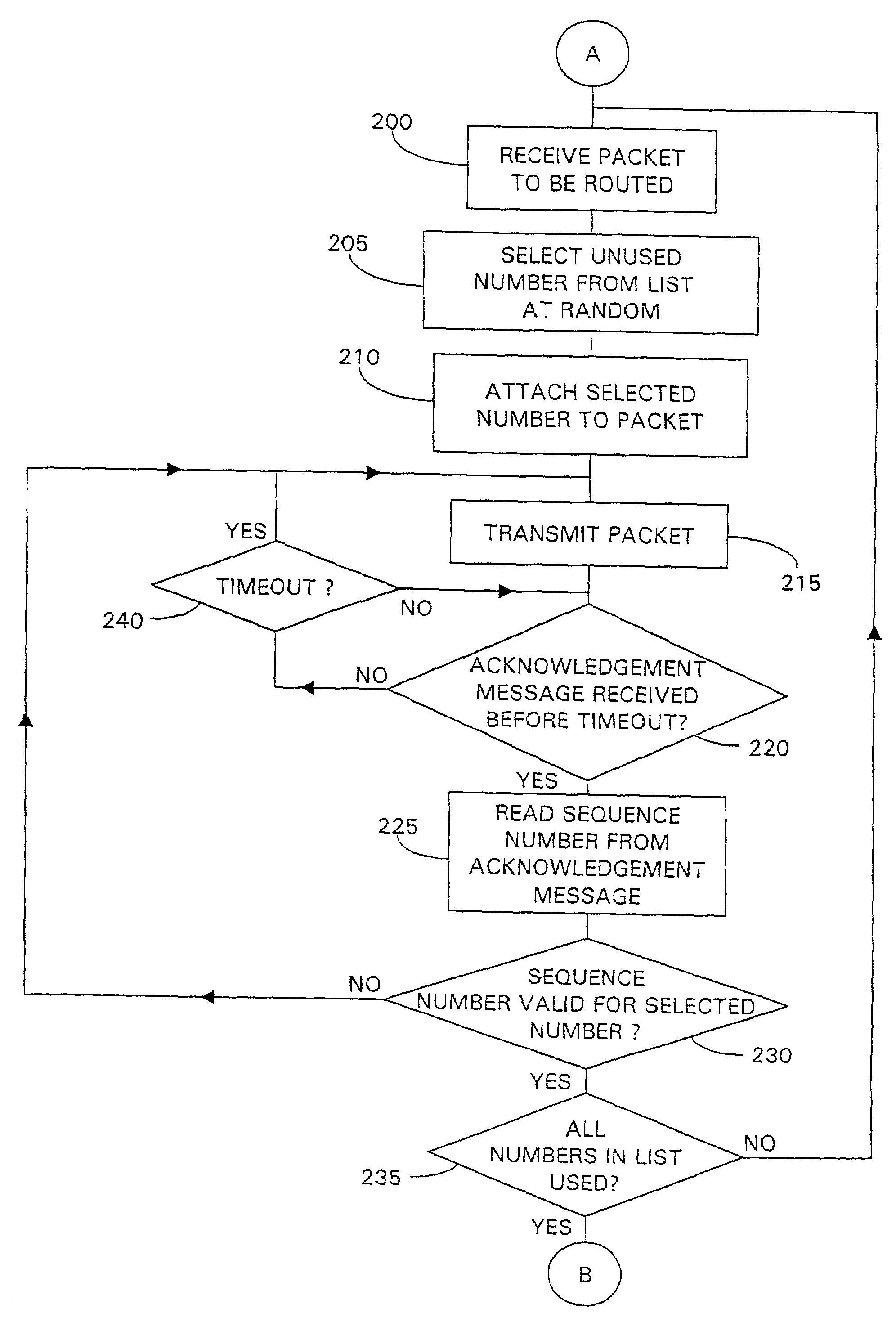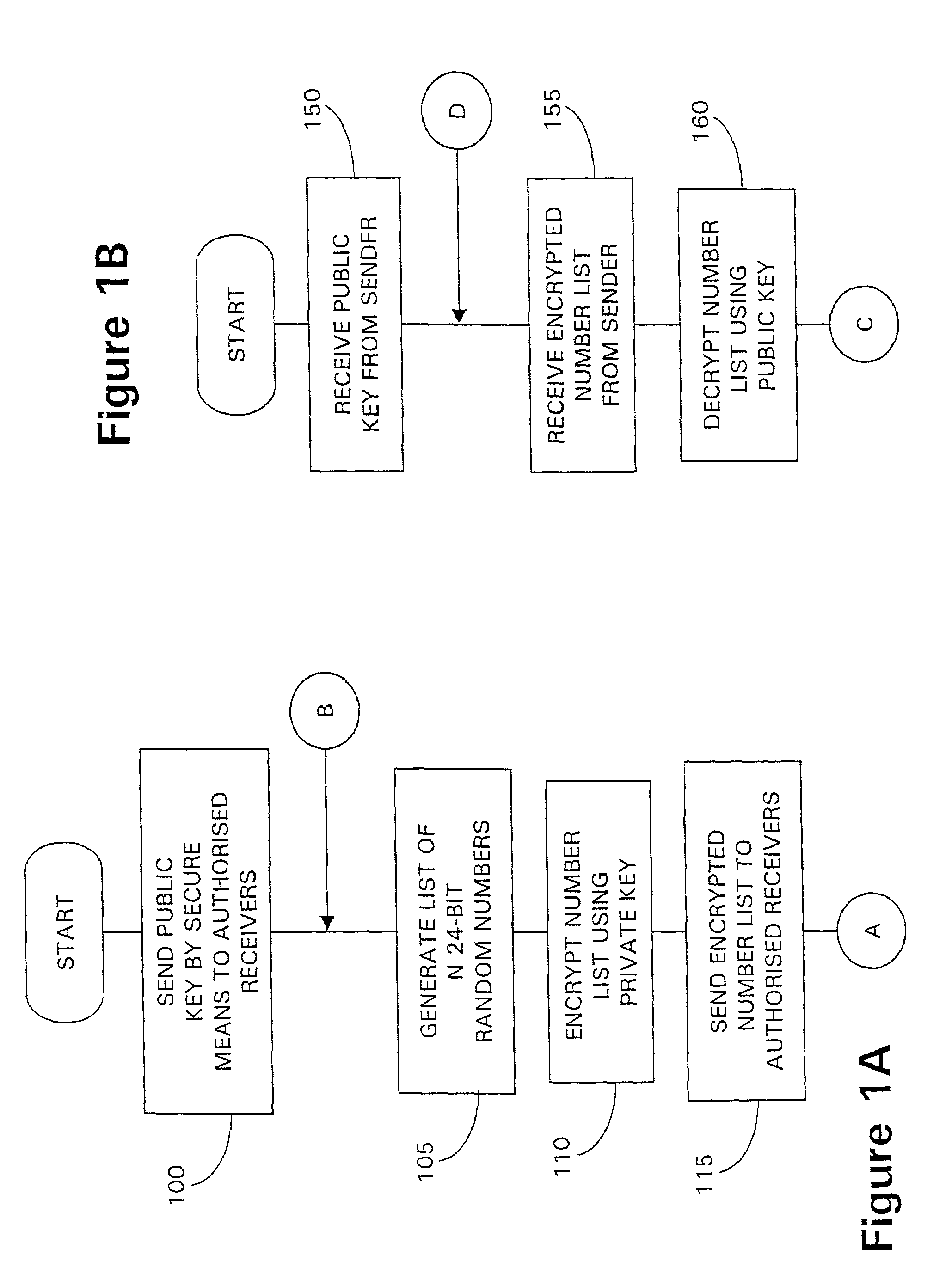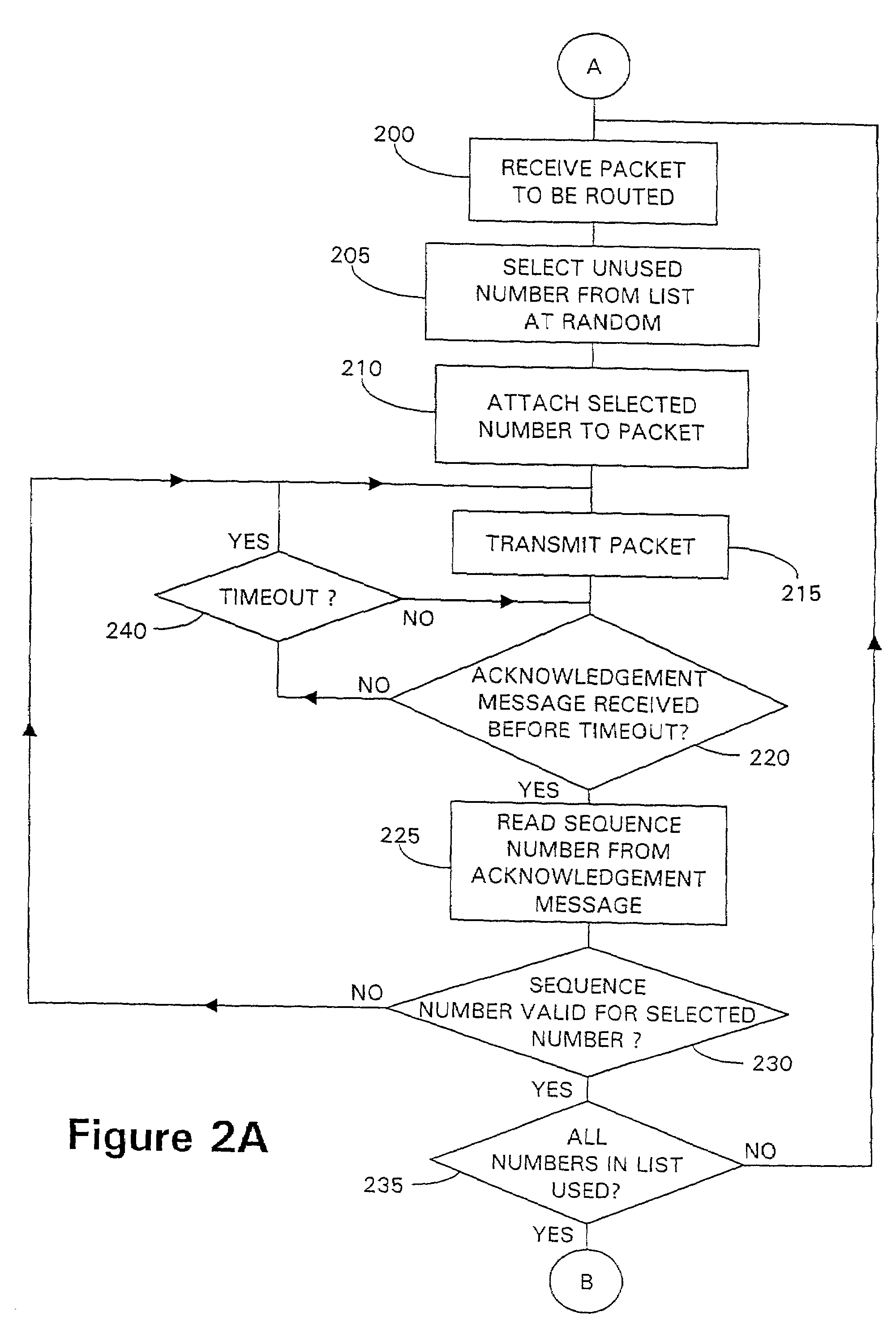Packet authentication
a packet network and authentication method technology, applied in the field of packet authentication, can solve the problems of data processing involved at the first server, the data element in the data packet before sending it is potentially very small, and the authentication method provided by this invention may be compromised by an unauthorised user, so as to reduce the throughput of servers and excess processing overhead
- Summary
- Abstract
- Description
- Claims
- Application Information
AI Technical Summary
Benefits of technology
Problems solved by technology
Method used
Image
Examples
Embodiment Construction
[0050]Referring to FIGS. 1A and 1B, two flow diagrams are presented, FIG. 1A showing the initial steps in operation of a first server to enable packets to be routed under the control of a packet authentication method according to embodiments of the present invention, FIG. 1B showing the initial steps in operation of a recipient server, co-operating with the first server, to enable packets routed by the first server to be received and verified as originating from the first server. In the particular embodiment to be described, an encryption technique based upon public and private encryption keys is used during the initial processing steps shown in FIGS. 1A and 1B, using PGP for example as referenced above, although any secure method for transmitting data may be used.
[0051]Referring to FIG. 1A, the process begins at STEP 100 with the first server sending its public encryption key to one or more authorised recipient servers. Authorised recipient servers are those likely to receive data ...
PUM
 Login to View More
Login to View More Abstract
Description
Claims
Application Information
 Login to View More
Login to View More - R&D
- Intellectual Property
- Life Sciences
- Materials
- Tech Scout
- Unparalleled Data Quality
- Higher Quality Content
- 60% Fewer Hallucinations
Browse by: Latest US Patents, China's latest patents, Technical Efficacy Thesaurus, Application Domain, Technology Topic, Popular Technical Reports.
© 2025 PatSnap. All rights reserved.Legal|Privacy policy|Modern Slavery Act Transparency Statement|Sitemap|About US| Contact US: help@patsnap.com



